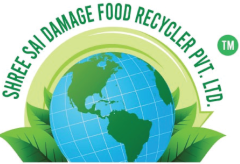Using Of Food Waste for Manufacturing Gas and Bio Chemical
Food wastes occur all through the supply chain and they very generally depending on the processing. Worldwide, more than 40% of the food loss happens at the consumer and retail levels, of which the processing level and post-harvest wastages take on the major share. The food wastes that occur pose a threat to the environmental, therefore this call for the better a pollution free model. Today, studies on the characterization of discarded, unutilized, and rotten fractions of the food wastes point out their potential standing for reprocessing. Production of renewable energy by bioconversion of wastes food materials is important all around the world as this has provided sufficient evidence to be an excellent means of using the perishable food residues. Industries and researchers are engaged completely in a number of different projects that involves the “waste to fuel” technology, having a view to rising above the problems of disposal.
Food wastes are biodegradable material produced in quite large quantities every year, much of which is thrown away on the roads to rot in the open, this not only produces a foul odor, but also generates a great pain by attracting rats, pigs, and birds,— vectors of all sorts of diseases. Apart from losses during the post-harvesting because of the lack of storage space, processing and wrapping of food materials according to specifications of clients also play a key role in waste generation. Food wastes materials include the peels, rotten, scraped and shell portions of food, vegetables or slurries.
These wastes food materials can further be treated for biofuel production all the way through fermentation under fully controlled conditions or else can be used for composting. The normal decomposition of food wastes by microbes creates products with high content of humus. Many researchers have long established that this carbohydrate-rich biomass can be a strong subtitle for renewable energy generation.
The food waste that we collect is mixed with garden waste and then it is taken to our in-vessel composting plant. At this facility specially designed to convert waste to fuel, all of the waste food materials are put together into a closed container called vessel. This mixture is then heated to over 80 degrees Celsius and is composted for no less than 100 days. After this process is complete the resulting stimulant is used as a soil improver on agricultural land or as a manufacturing gas.


